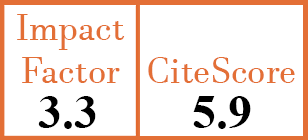Reviews
Primary aldosteronism: an unsuspected culprit of hypertension in systemic lupus erythematosus?
G.S. Feng1, J.R. Kent2, P.J. Fuller3, A.Y. Hoi4, A.R. Kitching5, J. Yang6, F.B. Vincent7
- Department of Medicine, Monash University, Clayton, Victoria, Australia.
- Department of Nephrology, Monash Health, Clayton, Victoria, Australia.
- Department of Endocrinology, Monash Health, Clayton, and Centre for Endocrinology and Metabolism, Hudson Institute of Medical Research, Clayton, Victoria, Australia.
- Centre for Inflammatory Diseases, School of Clinical Sciences at Monash Health, Monash University, Clayton, and Department of Rheumatology, Monash Health, Clayton, Victoria, Australia.
- Department of Nephrology, Monash Health, Clayton; Centre for Inflammatory Diseases, School of Clinical Sciences at Monash Health, Monash University, Clayton, and Department of Paediatric Nephrology, Monash Medical Centre, Clayton, Victoria, Australia.
- Department of Medicine, Monash University, Clayton; Department of Endocrinology, Monash Health, Clayton, and Centre for Endocrinology and Metabolism, Hudson Institute of Medical Research, Clayton, Victoria, Australia.
- Centre for Inflammatory Diseases, School of Clinical Sciences at Monash Health, Monash University, Clayton, Victoria, Australia. fabien.vincent@monash.edu
CER16717
2023 Vol.41, N°11
PI 2312, PF 2322
Reviews
Free to view
(click on article PDF icon to read the article)
PMID: 37650287 [PubMed]
Received: 31/03/2023
Accepted : 10/07/2023
In Press: 29/08/2023
Published: 14/11/2023
Abstract
Primary aldosteronism (PA) is the most common endocrine cause of secondary hypertension and is associated with a high risk of cardiovascular disease in the general population. Patients suffering from systemic lupus erythematosus (SLE), a multisystem and multifactorial autoimmune disease, experience a high burden of hypertension and cardiovascular disease. Importantly, cardiovascular disease is one of the leading causes of death in SLE. Very limited evidence suggests an increased proportion of autoimmune diseases such as SLE in patients with PA. However, studies evaluating the prevalence of PA in the SLE population are lacking. Despite the potential for curative or targeted treatments, guidelines for the management of hypertension in SLE do not currently recommend testing for PA. This review highlights PA as a potentially over-looked secondary cause of hypertension in SLE, and offers future directions in research to improve the detection of this highly modifiable cardiovascular risk factor in the SLE population.


